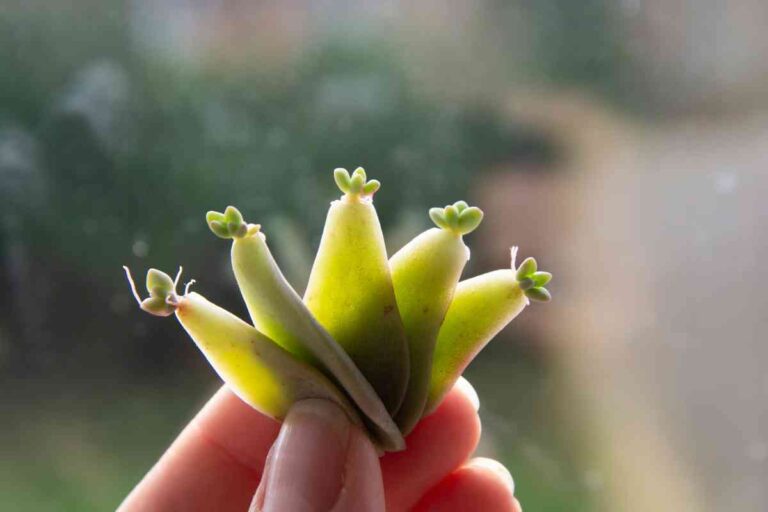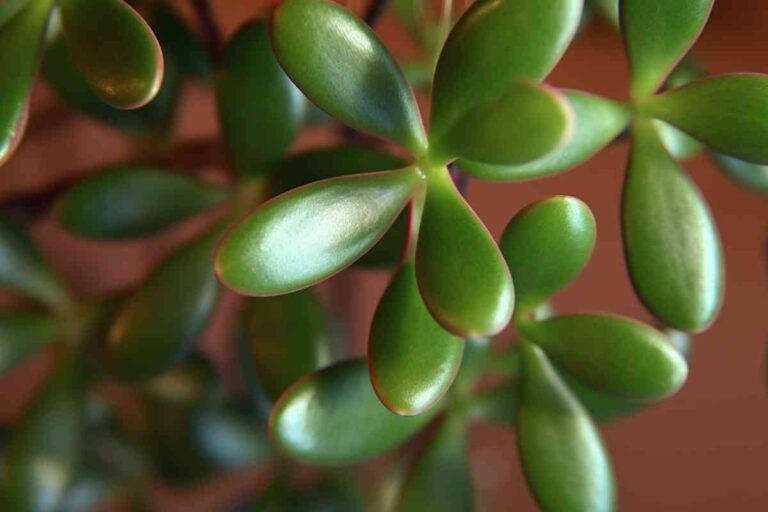How Often Should You Fertilize Succulents: Expert Recommendations
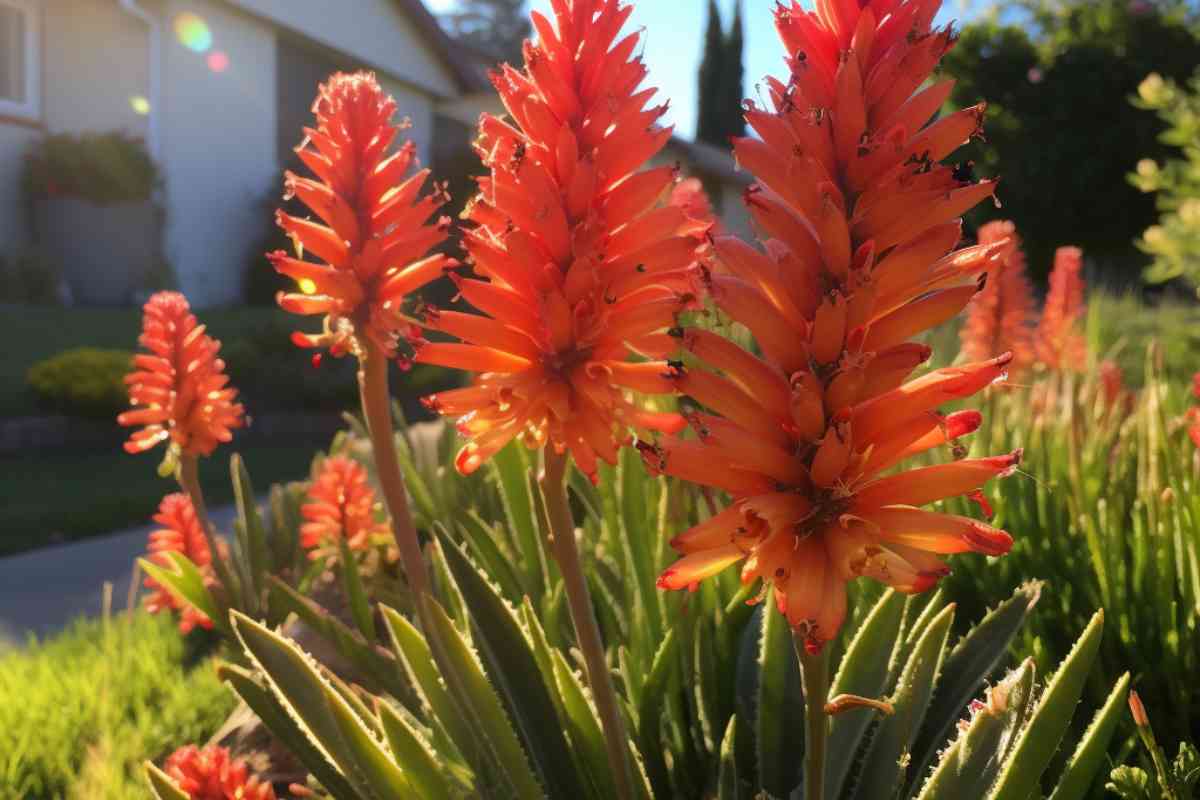
Fertilizer is too often overlooked when caring for succulents, but knowing how often to fertilize your succulents can make all the difference in their growth and overall health.
When it comes to fertilizing succulents, there is no one-size-fits-all answer. The frequency of fertilization depends on the type of succulent, the kind of fertilizer, and the time of year.
Over-fertilizing can be just as harmful as under-fertilizing, so it is crucial to strike a balance.
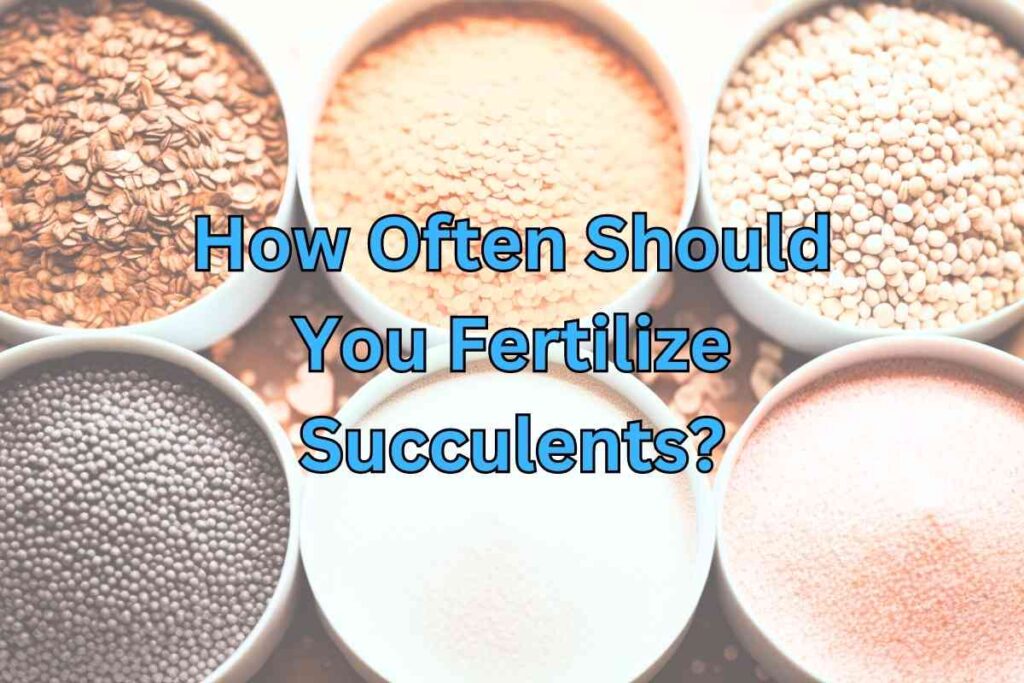
How often should you fertilize succulents?
Succulents should be fertilized about once or twice a month during the growing season, depending on the type of fertilizer. Some fertilizers need only be applied once or twice a year, like slow-release fertilizers or compost. Fertilizer shouldn’t be applied during the winter, except for indoor plants that don’t go dormant.
Here’s everything you need to know about how often to fertilize your succulents and when, depending on what kind of fertilizer you use. I’ll also go over the best fertilizers for succulents to help you choose the right one for your needs.
Don’t forget to bookmark this guide that covers everything you need to know about caring for succulents, indoor or out.
Learn a lot more about natural fertilizer here.
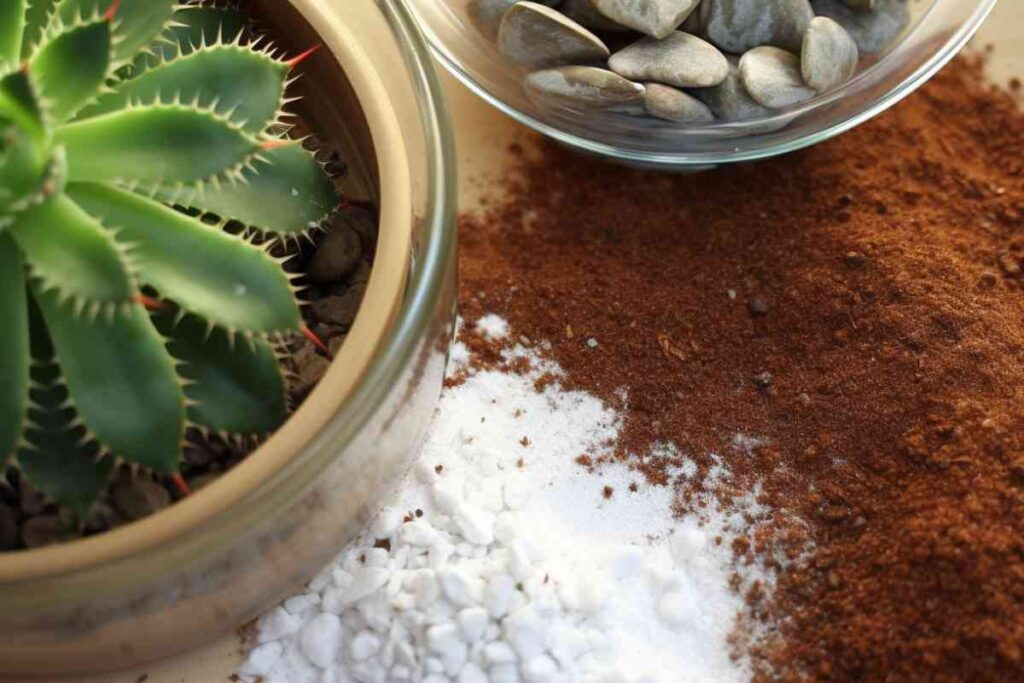
How Often to Fertilize Succulents
Here’s how often to fertilize succulents if they’re kept outside or if temperatures fluctuate enough to cause them to go dormant in the winter.
| Fertilizer Type | Spring Application | Summer Application | Fall Application | Application Method |
|---|---|---|---|---|
| Liquid Succulent Fertilizer | Every 2-4 weeks | Every 2-4 weeks | Every 6-8 weeks | Dilute in water and apply directly to the soil around the plants. |
| Succulent and Cactus Fertilizer | Every 2-3 weeks | Every 2-3 weeks | Every 6-8 weeks | Follow the instructions on the packaging for application rates and methods. |
| Liquid Organic Fertilizer | Every 4-6 weeks | Every 4-6 weeks | Do not apply | Dilute in water and apply to the soil around the plants, avoiding direct contact with the leaves. |
| Diluted Fish Emulsion | Every 2-4 weeks | Every 2-4 weeks | Do not apply | Dilute fish emulsion according to the instructions and apply to the soil around the plants. |
| Slow-Release Organic Fertilizer | Apply in spring | Apply in spring | Do not apply | Sprinkle the granules on the soil surface, following the recommended dosage. |
| Slow-Release Chemical Fertilizer | Apply in spring | Apply in spring | Do not apply | Apply the granules according to the instructions, avoiding direct contact with the leaves. |
| Compost | Once or twice a year | Once or twice a year | Once or twice a year | Mix compost into the soil or apply as a top dressing around the base of the plants. |
| Worm Castings | Once or twice a year | Once or twice a year | Once or twice a year | Mix worm castings into the soil or apply as a top dressing around the plants. |
| Manure Tea | Every 2-4 weeks | Every 2-4 weeks | Do not apply | Dilute manure tea according to the instructions and water the plants with it. |
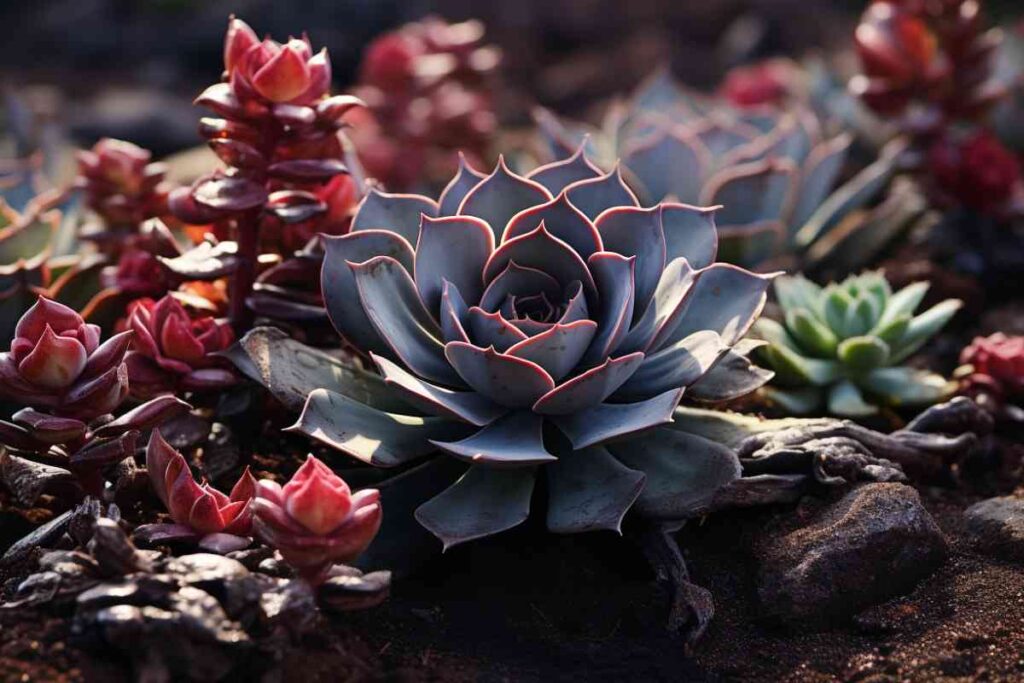
How Often to Fertilize Indoor Succulents
If your succulents don’t go dormant in the winter, then follow these guidelines. The application of fertilizer is the same as in the table above.
| Fertilizer Type | Spring Application | Summer Application | Fall Application | Winter Application |
|---|---|---|---|---|
| Liquid Succulent Fertilizer | Every 2-4 weeks | Every 2-4 weeks | Every 6-8 weeks | Every 8-12 weeks |
| Succulent and Cactus Fertilizer | Every 2-3 weeks | Every 2-3 weeks | Every 6-8 weeks | Every 8-12 weeks |
| Liquid Organic Fertilizer | Every 4-6 weeks | Every 4-6 weeks | Every 8-10 weeks | Every 10-12 weeks |
| Diluted Fish Emulsion | Every 2-4 weeks | Every 2-4 weeks | Every 6-8 weeks | Every 8-12 weeks |
| Slow-Release Organic Fertilizer | Apply in spring | Apply in spring | Apply in fall | Do not apply |
| Slow-Release Chemical Fertilizer | Apply in spring | Apply in spring | Apply in fall | Do not apply |
| Compost | Once or twice a year | Once or twice a year | Once or twice a year | Once or twice a year |
| Worm Castings | Once or twice a year | Once or twice a year | Once or twice a year | Once or twice a year |
| Manure Tea | Every 2-4 weeks | Every 2-4 weeks | Every 6-8 weeks | Every 8-12 weeks |

The Importance of Fertilizing Succulents
Fertilizing succulents is crucial for their growth and health. While they can survive in harsh conditions, they still require nutrients to thrive. Proper fertilization provides the necessary nutrients for optimal development.
Underfertilizing succulents can have a few consequences. First, their growth may slow down or become stunted. This means they won’t reach their full potential and may appear smaller or less vibrant.
Second, the leaves may lose their color intensity and become pale or dull. Third, underfertilized succulents may have weaker stems, making them more prone to breakage.
Their overall health and resilience may be compromised, making them more susceptible to pests and diseases. Finally, underfertilized succulents may not produce as many flowers or propagate as readily as properly nourished plants.
What Succulent Fertilizers Should Contain
NPK Ratio
The NPK ratio represents the nitrogen, phosphorus, and potassium content in the fertilizer. Nitrogen promotes leaf growth, phosphorus aids root development, and potassium contributes to overall plant health.
For succulents, aim for a balanced NPK ratio of 2-1-2 or 3-1-2. Steer clear of fertilizers with high nitrogen levels, as they can cause excessive growth and legginess in your succulents.
Micronutrients
Succulents also need micronutrients like iron, zinc, and manganese for healthy growth. Look for fertilizers that include these micronutrients, or you can supplement with a micronutrient spray if necessary.
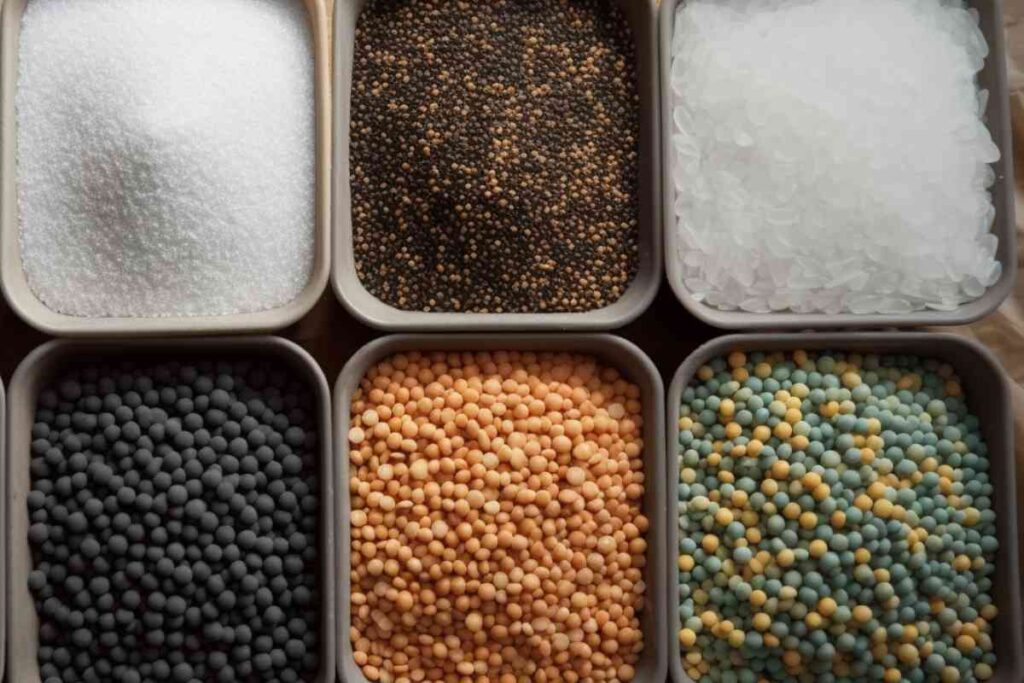
Types of Succulent Fertilizers
- Liquid Succulent Fertilizer: Liquid succulent fertilizer is a concentrated solution specifically formulated to meet the nutritional needs of succulent plants. It contains a balanced mix of essential nutrients, including nitrogen, phosphorus, and potassium, as well as trace minerals.
- Pros:
- Quick absorption: Liquid fertilizer is easily and quickly absorbed by succulents, ensuring efficient nutrient uptake.
- Easy to use: It can be conveniently mixed with water and applied directly to the soil, providing an instant nutrient boost.
- Controlled dosage: Liquid fertilizers allow for precise control of the fertilizer strength, enabling you to adjust the concentration based on the specific needs of your succulents.
- Cons:
- Cost: Liquid succulent fertilizers tend to be more expensive compared to other types of fertilizers.
- Frequent application: Liquid fertilizers may require more frequent applications throughout the growing season to maintain optimal nutrient levels.
- Risk of over-fertilization: Due to the concentrated nature of liquid fertilizers, there is a higher risk of accidentally applying too much, which can harm succulents.
- Pro Tip: Dilute the liquid fertilizer to half or quarter strength to prevent over-fertilization, especially for sensitive succulent varieties. Apply it during the active growing season for best results.
- Pros:
- Succulent and Cactus Fertilizer: Succulent and cactus fertilizers are specifically formulated to cater to the unique nutritional requirements of these plants. They contain a balanced ratio of macronutrients and micronutrients, including nitrogen, phosphorus, potassium, and essential trace elements.
- Pros:
- Targeted formulation: Succulent and cactus fertilizers are designed to provide the precise nutrients that these plants need, promoting healthy growth and vibrant colors.
- Easy absorption: The nutrient composition of these fertilizers allows for efficient uptake by succulents, ensuring maximum utilization and minimizing waste.
- Enhances flowering: Some succulent and cactus fertilizers are formulated with added phosphorus, which encourages blooming and enhances flower production.
- Cons:
- Cost: Succulent and cactus fertilizers can be relatively more expensive compared to general-purpose fertilizers.
- Limited versatility: These fertilizers are tailored specifically for succulents and cacti, so they may not be suitable for other types of plants in your garden.
- Potential nutrient imbalances: Depending on the specific brand and formulation, some succulent fertilizers may have imbalanced nutrient ratios or deficiencies, so it’s essential to choose a reputable brand.
- Pro Tip: Apply the fertilizer according to the packaging instructions and adjust the frequency based on the specific needs of your succulents. Observe your plants closely to ensure they are responding positively to the fertilizer.
- Pros:
- Liquid Organic Fertilizer: Liquid organic fertilizers are derived from natural sources such as plant extracts, compost, or animal-based products. They provide essential nutrients and organic matter to support the growth and health of succulent plants.
- Pros:
- Soil health improvement: Liquid organic fertilizers help improve soil structure, moisture retention, and microbial activity, creating a more favorable environment for succulents.
- Environmentally friendly: Organic fertilizers are safe for plants, humans, and the environment, as they are free from synthetic chemicals and pollutants.
- Slow-release benefits: Liquid organic fertilizers release nutrients gradually, providing a sustained supply of nutrients to succulents over time.
- Cons:
- Nutrient variability: The nutrient content in liquid organic fertilizers may vary, making it more challenging to precisely control the nutrient levels provided to succulents.
- Lower nutrient concentration: Organic fertilizers often have lower nutrient concentrations compared to synthetic fertilizers, so higher application volumes may be necessary.
- Potential odor: Some liquid organic fertilizers, especially those derived from animal-based sources, can have a strong odor that may be unpleasant to some gardeners.
- Pro Tip: Apply fertilizer outside and let your succulent dry out before bringing it inside if you’re using this fertilizer on inside plants. It can really stink!
- Pros:
- Diluted Fish Emulsion: Diluted fish emulsion is a liquid fertilizer made from decomposed fish remains. It is rich in essential nutrients such as nitrogen, phosphorus, and potassium, as well as trace elements.
- Pros:
- Rich nutrient source: Fish emulsion provides a concentrated source of nutrients, particularly nitrogen, which supports vigorous growth and overall plant health.
- Organic option: It is an organic fertilizer, making it environmentally friendly and safe for both plants and beneficial soil organisms.
- Quick absorption: The nutrients in fish emulsion are readily absorbed by succulents, leading to rapid results.
- Cons:
- Strong odor: Diluted fish emulsion can have a pungent smell, which may be bothersome to some individuals.
- Risk of over-fertilization: Due to its potency, it’s crucial to dilute fish emulsion properly to avoid burning the roots or causing nutrient imbalances.
- Potential attraction of pests: The odor may attract unwanted pests if not used judiciously.
- Pro Tip: Dilute fish emulsion according to the instructions, and apply it sparingly to prevent burning the roots. Avoid getting it on the leaves to minimize odor and potential pest issues. Use it as a supplement to other fertilizers for balanced nutrition.
- Pros:
- Slow-Release Organic Fertilizer: Slow-release organic fertilizer comes in granular form and is made from natural materials. It is designed to release nutrients gradually over an extended period.
- Pros:
- Controlled nutrient release: Slow-release fertilizers provide a steady supply of nutrients, reducing the risk of over-fertilization and minimizing nutrient leaching.
- Environmentally friendly: Organic slow-release fertilizers are safe for the environment and promote long-term soil health.
- Low-maintenance: With slow-release fertilizers, you don’t need to fertilize as frequently, making it convenient for busy gardeners.
- Cons:
- Delayed effect: Slow-release fertilizers may take longer to show noticeable effects on plant growth compared to quick-release options.
- Initial cost: They can be more expensive upfront, but their long-lasting effects may offset the initial investment.
- Specific nutrient content: The nutrient ratio in slow-release organic fertilizers may not be customizable, so it’s essential to choose a well-balanced product.
- Pro Tip: Apply slow-release organic fertilizer in the spring, as succulents enter their active growth phase. Sprinkle the granules on the soil surface, following the recommended dosage. Reapply as needed based on the fertilizer’s instructions.
- Pros:
- Slow-Release Chemical Fertilizer: Slow-release chemical fertilizer is similar to organic slow-release fertilizer but contains synthetic nutrients in granular form.
- Pros:
- Controlled nutrient release: Slow-release chemical fertilizers provide a gradual and consistent supply of nutrients to succulents.
- Customizable nutrient ratios: Some slow-release chemical fertilizers offer a more tailored nutrient blend to meet the specific needs of succulents.
- Low-maintenance: They require less frequent application, making them convenient for busy gardeners.
- Cons:
- Environmental impact: Slow-release chemical fertilizers may have a greater environmental impact due to their synthetic nature.
- Risk of over-fertilization: Despite slow-release properties, excessive use can still lead to nutrient imbalances and harm succulents.
- Initial cost: Slow-release chemical fertilizers tend to be more expensive than traditional chemical fertilizers.
- Pro Tip: Follow the manufacturer’s instructions closely when using slow-release chemical fertilizers. Start with a conservative application and monitor your succulents’ response. Adjust the dosage if necessary.
- Pros:

- Compost: Compost is a nutrient-rich organic material created from decomposed plant matter and organic waste.
- Pros:
- Soil improvement: Compost enhances soil structure, moisture retention, and microbial activity, promoting overall plant health.
- Organic and sustainable: It is an environmentally friendly option that reduces waste and supports sustainable gardening practices.
- Slow-release nutrients: Compost releases nutrients gradually, providing a steady supply of essential elements to succulents.
- Cons:
- Nutrient variability: The nutrient content in compost can vary based on the source materials and decomposition process, making it harder to determine exact nutrient ratios.
- Possible weed seeds or pathogens: Improperly composted materials may contain weed seeds or pathogens that can affect plant growth.
- Bulkiness: Compost can be bulky and may require additional amendments for proper soil drainage.
- Pro Tip: Mix compost with potting mix or use it as a top dressing around succulents. Ensure the compost is well-aged and fully decomposed to minimize the risk of introducing weed seeds or pathogens.
- Pros:
- Worm Castings:
- Description: Worm castings are nutrient-rich organic matter produced by earthworms through the breakdown of organic materials.
- Pros:
- Nutrient density: Worm castings contain high levels of beneficial nutrients, enzymes, and microbial activity that promote healthy plant growth.
- Improves soil structure: They help enhance soil aeration, water-holding capacity, and nutrient retention.
- Safe and odorless: Worm castings are safe to use, odorless, and non-toxic, making them ideal for indoor gardening.
- Cons:
- Limited nutrient spectrum: Worm castings may not provide a complete range of nutrients, so supplementation with other fertilizers may be necessary.
- Cost and availability: High-quality worm castings can be more expensive and may not be readily available in all areas.
- Potential for contamination: If the worms are fed with contaminated materials, such as pesticides or chemicals, it can impact the quality of the worm castings.
- Pro Tip: Mix worm castings into the potting mix or use them as a top dressing around succulents. Start with a small amount and gradually increase the dosage as needed.
- Manure Tea:
- Description: Manure tea is a liquid fertilizer made by steeping aged animal manure in water.
- Pros:
- Nutrient-rich: Manure tea provides a concentrated source of nutrients, including nitrogen, phosphorus, and potassium.
- Organic option: It is an organic fertilizer that enriches the soil and promotes healthy plant growth.
- Cost-effective: Manure tea can be made at home using readily available materials, making it a cost-effective option.
- Cons:
- Odor and potential pests: Manure tea can have a strong odor, and if not properly filtered, it may contain undissolved solids or pathogens that can attract pests.
- Nutrient variability: The nutrient composition of manure tea can vary depending on the type of animal manure used and the brewing process.
- Risk of over-fertilization: Dilution is crucial to prevent applying too high a concentration of nutrients, which can burn the roots or cause nutrient imbalances.
- Pro Tip: Use well-aged and composted manure to minimize the risk of pathogens. Dilute manure tea with water before applying it to succulents. Apply it sparingly and avoid getting it on the leaves to reduce odor and potential pest attraction.

Potential Risks and Solutions
Fertilizing succulents can be beneficial for their growth and health, but it is important to do so carefully. Over-fertilization can lead to several problems, including burned leaves, stunted growth, and susceptibility to pests. Here are some potential risks and solutions to consider when fertilizing your succulents:
- Burned leaves: If you notice that your succulent’s leaves are turning brown or black, it may be a sign of fertilizer burn. To prevent this, avoid applying fertilizer directly to the leaves and water your succulent thoroughly after fertilizing to flush out any excess salts.
- Pests: Over-fertilized succulents are more susceptible to pests such as spider mites and mealybugs. Avoid over-fertilizing and keep an eye out for any signs of infestation. If you do notice pests, treat your succulent with an appropriate insecticide.
- Growth spurt: Fertilizing your succulent can encourage it to grow quickly, but this can also lead to weak, leggy growth. To promote healthy growth, use a balanced fertilizer and avoid fertilizing during the winter months when succulents are dormant.
- Root development: Fertilizing your succulent can also promote healthy root development, but it is important not to fertilize newly planted succulents until they have established roots. Once your succulent has established roots, you can begin fertilizing it sparingly.
Do you find yourself with extra succulent soil? Wondering what to do with it? Here’s what you need to know about using succulent soil for other plants.
If you’ve had some fertilizing mishaps, you may be left without roots. Here’s how to save a succulent without roots.
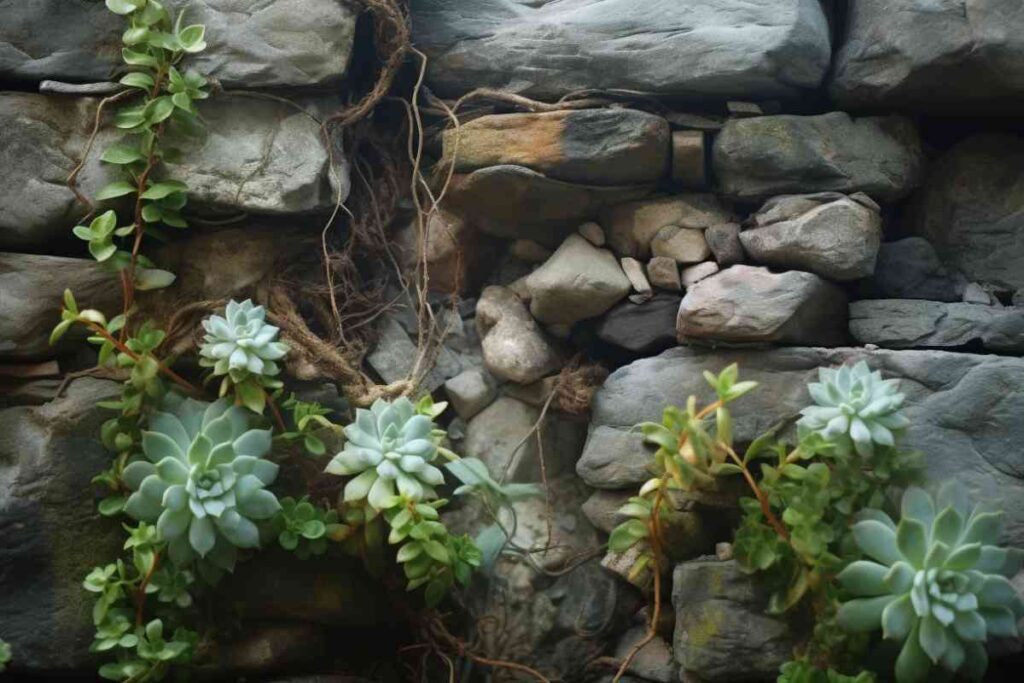
Frequently Asked Questions
When should I fertilize my succulents?
It is recommended to fertilize your succulents during the growing season, which is typically from spring to fall. During this time, you can fertilize once a month or every other month. It is best to avoid fertilizing during the winter months when the plants are dormant.
Can succulents be over-fertilized?
Yes, succulents can be over-fertilized. Over-fertilization can lead to burnt roots and leaves, which can ultimately harm or kill the plant. It is important to follow the instructions on the fertilizer package and not exceed the recommended amount.
What is the best fertilizer for succulents?
The best fertilizer for succulents is a balanced, water-soluble fertilizer with an N-P-K ratio of 10-10-10 or 5-10-5. You can also use a fertilizer specifically formulated for cacti and succulents. It is important to choose a fertilizer that is low in nitrogen, as succulents do not require high levels of this nutrient.
How often should I fertilize my succulents in summer?
During the summer months, when succulents are actively growing, you can fertilize once a month. However, it is important to adjust the frequency based on the specific needs of your plant and the type of fertilizer you are using.
How to fertilize succulents naturally?
You can fertilize succulents naturally by using compost or worm castings. Simply mix the compost or worm castings into the soil around the base of the plant. You can also make a tea from compost or worm castings and use it to water your succulents.
Is Miracle-Gro good for succulents?
Miracle-Gro can be used for succulents, but it is important to dilute it to half strength and only use it once a month during the growing season. It is also important to choose a Miracle-Gro fertilizer that is low in nitrogen.
It is recommended to fertilize your succulents during the growing season, which is typically from spring to fall. During this time, you can fertilize once a month or every other month. It is best to avoid fertilizing during the winter months when the plants are dormant.
“}},{“@type”:”Question”,”name”:”Can succulents be over-fertilized?”,”acceptedAnswer”:{“@type”:”Answer”,”text”:”
Yes, succulents can be over-fertilized. Over-fertilization can lead to burnt roots and leaves, which can ultimately harm or kill the plant. It is important to follow the instructions on the fertilizer package and not exceed the recommended amount.
“}},{“@type”:”Question”,”name”:”What is the best fertilizer for succulents?”,”acceptedAnswer”:{“@type”:”Answer”,”text”:”
The best fertilizer for succulents is a balanced, water-soluble fertilizer with an N-P-K ratio of 10-10-10 or 5-10-5. You can also use a fertilizer specifically formulated for cacti and succulents. It is important to choose a fertilizer that is low in nitrogen, as succulents do not require high levels of this nutrient.
“}},{“@type”:”Question”,”name”:”How often should I fertilize my succulents in summer?”,”acceptedAnswer”:{“@type”:”Answer”,”text”:”
During the summer months, when succulents are actively growing, you can fertilize once a month. However, it is important to adjust the frequency based on the specific needs of your plant and the type of fertilizer you are using.
“}},{“@type”:”Question”,”name”:”How to fertilize succulents naturally?”,”acceptedAnswer”:{“@type”:”Answer”,”text”:”
You can fertilize succulents naturally by using compost or worm castings. Simply mix the compost or worm castings into the soil around the base of the plant. You can also make a tea from compost or worm castings and use it to water your succulents.
“}},{“@type”:”Question”,”name”:”Is Miracle-Gro good for succulents?”,”acceptedAnswer”:{“@type”:”Answer”,”text”:”
Miracle-Gro can be used for succulents, but it is important to dilute it to half strength and only use it once a month during the growing season. It is also important to choose a Miracle-Gro fertilizer that is low in nitrogen.
“}}]}


